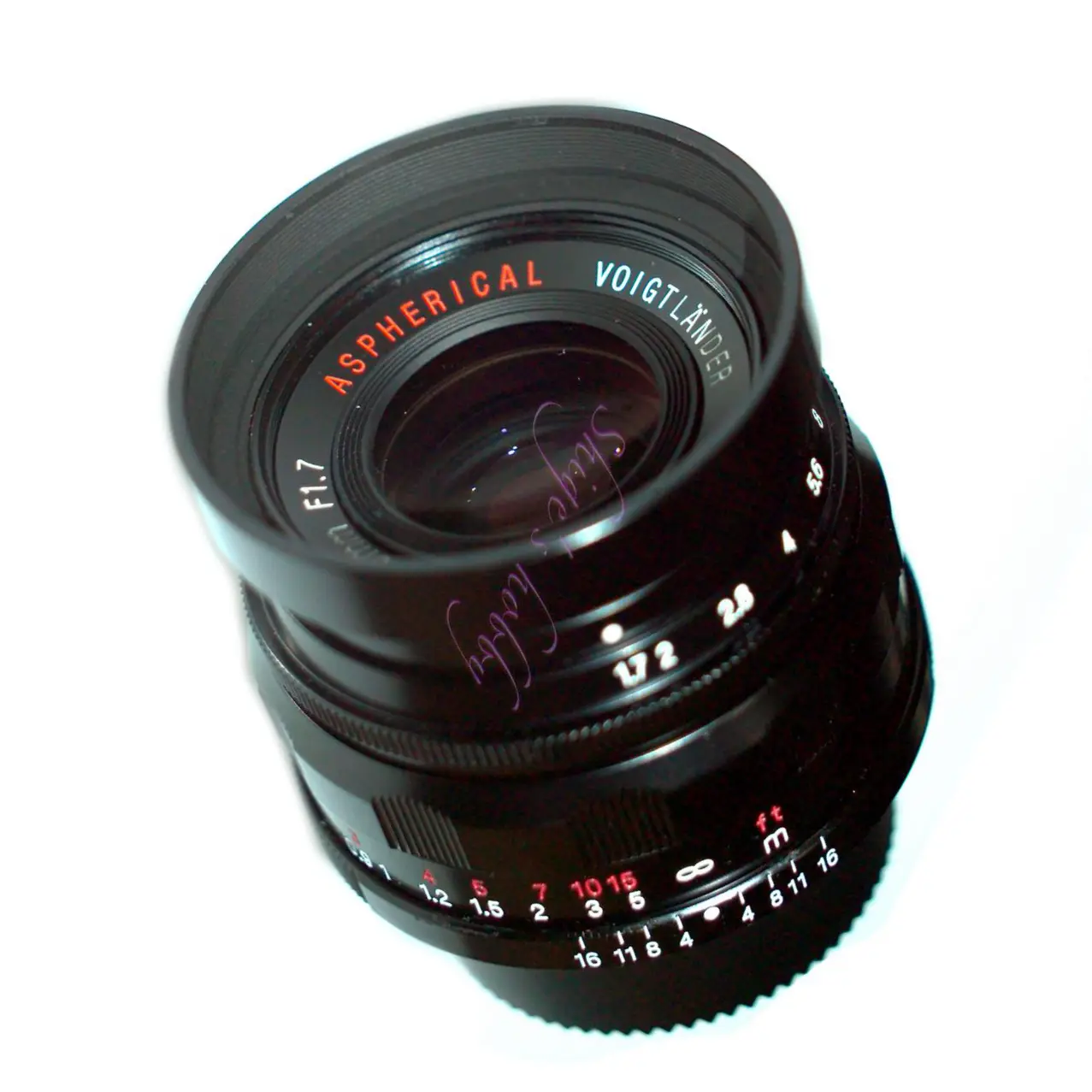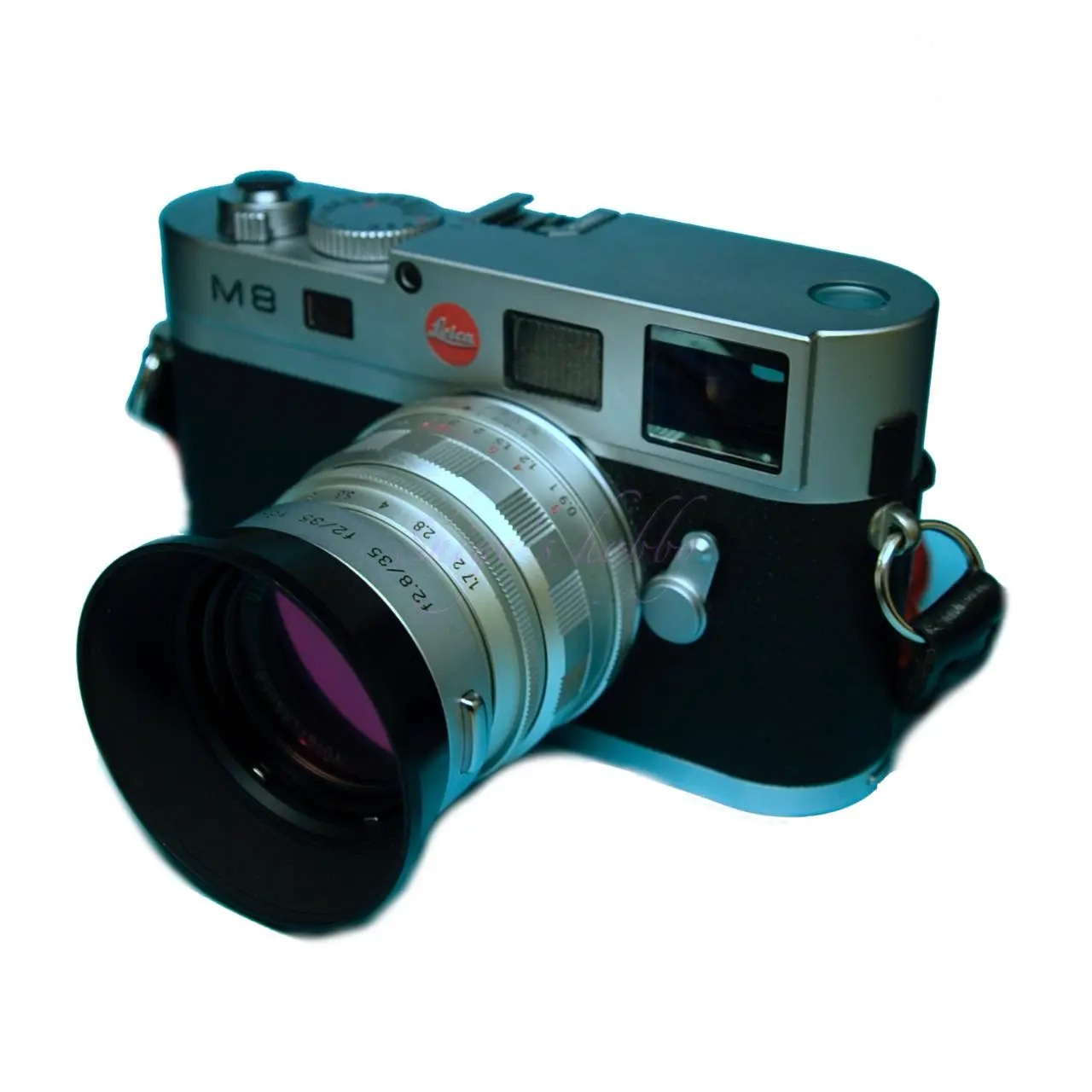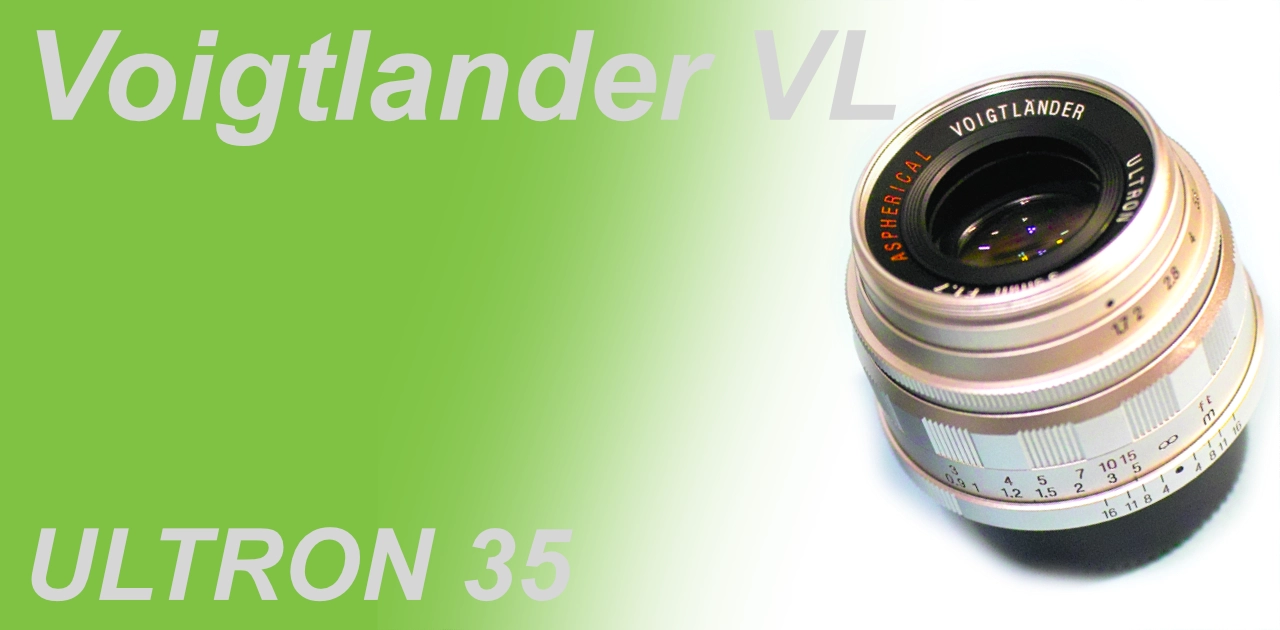Last updated on 2025-08-15
A review and photo examples using the Voigtlander Ultron 35mm F1.7 with the LEICA M6TTL and LEICA M8.
- Please see the disclaimer regarding advertising here.
- Italicized links in the text are advertisement links that take you to other sites.
Table of contents
Gallery
The following cameras and films were used to take the sample photos.
- LEICA M6 TTL +KODAK PORTRA 160
- LEICA M8
Review


1.Overview
The Voigtlander ULTRON 35mm F1.7 Aspherical is a lens released by Cosina in the early days of the Voigtlander brand.
It features a lens configuration of 8 elements in 6 groups, with a minimum focusing distance of 0.9m.
The lens mount is an L39 screw mount, which is compatible with rangefinder cameras’ rangefinders up to 0.9m.
The filter diameter is 39mm and is screwed onto the front of the lens.
The original screw-on hood is short and provides little light blocking effect. Furthermore, the appearance of the lens with the original hood attached is somewhat lacking. To improve this, attaching the IROOA Hood for the Leica Summicron 35mm will transform the look.
The external thread pitch that remains after removing the original Ultron lens hood is designed to match the IROOA fixing hook. (Attaching the IROOA hood is not recommended by the manufacturer, so please understand that users do so at their own risk.)
With the IROOA attached, the lens appears as shown in the photo on the right, creating a valley at the aperture ring and a beautiful line that continues into the slight rise of the focus ring. Looking at this, it seems as though Cosina was aiming for this in the lens design.
2.Usability
Looking at the results of shooting with 35mm film on a Leica M6TTL, the ULTRON 35mm F1.7 Aspherical produces flat, clean images with no visible vignetting or breakdown at the edges.
When using the LEICA M8, which is equipped with an APS-C sensor, the focal length is close to that of a standard lens (35*1.33=47mm), and since only the center of the lens is used, the entire frame appears sharper. With a digital camera, the blur can be distracting in some scenes, so you’ll need to actually shoot to confirm the results with a camera equipped with a 35mm full-frame sensor.
In terms of operability, considering the thickness and weight of the helicoid, the focus ring’s knurling is shallow, and there’s no finger grip like with other lenses, making it difficult to focus quickly during quick shots. However, it’s easy to operate when carefully adjusting the focus point, such as for landscapes.
Early Cosina Voigtländer lenses were in a transitional period between old lenses and digital-compatible lenses, and they moved away from the common Gaussian type in lens construction to more complex lens structures, suggesting a lot of trial and error in their design.
Along with the Ultron 28mm F1.9, they use aspherical lenses, making them a lens that was a testament to the brand’s early days.
3.Summary
In conclusion, to sum up the ULTRON 35mm F1.7 Aspherical is a large, bright wide-angle lens. When used with film, there are no problems with image quality across the entire screen.
However, because it is an older design, there is a chance that images may appear rough when used with cameras equipped with high-pixel 35mm full-frame (full-size) sensors, so it is best to test it out to make sure that the image quality is within the acceptable range for your camera and the photographer.
Specifications, considerations, etc.
In 2015, 16 years after the original L39 screw mount, the Voigtlander ULTRON 35mm F1.7 Aspherical was released. It featured a revised lens design and a VM mount compatible with the Leica M mount.
Five years later, in 2021, the third-generation ULTRON was released, featuring a revised lens design and an F2 maximum aperture.
As stated on the official website shortly after the third-generation model, the new Voigtlander APO-LANTHAR 35mm F2 was released, boasting, “The apochromatic design minimizes axial chromatic aberration of the three primary colors of light, thoroughly eliminating all types of aberrations while also pursuing ultimate performance in terms of resolution and contrast reproduction.”
The Voigtlander APO-LANTHAR 35mm has a maximum aperture of f/2, which is modest compared to the previous Voigtlander ULTRON 35mm f/1.7, and the Voigtlander ULTRON 35mm, which was sold at the same time as the Voigtlander APO-LANTHAR 35mm, was manufactured with a reduced aperture of f/2.
The reason for this change is thought to be that the product lineup would not have allowed the Voigtlander ULTRON 35mm, which has a brighter f/2 than the top-of-the-line Voigtlander APO-LANTHAR 35mm, to be lined up alongside it at the same time.
If the Voigtlander APO-LANTHAR35mm had a maximum aperture of f/1.4, the Voigtlander ULTRON 35mm would likely have continued at f/1.7, but the f/1.4 APO specification was probably not possible due to the lens’s large size and expense.
Voigtlander’s 35mm range also includes the NOKTON 35mm , which has a larger aperture value of F1.4 and F1.2, and since they sell many lenses with the same focal length but different aperture values, it seems like they are struggling to strike a balance between their products.
| Items | ULTRON 35mm F1.7 Aspherical | SUMMICRON 35mm ASPH. |
| Focal length(mm) | 35 | 35 |
| Max aperture | 1.7 | 2 |
| Min aperture | 16 | 16 |
| Leaf blade | 10 | 9 or 11 |
| Lens Construction | 8elements in 6groups | 7elements in 5groups |
| Min distance(m) | 0.9 | 0.7 |
| Lens length(mm) | 44.7(with hood / L39) | 34.5(M mount) |
| Max diameter(mm) | 55 | 53 |
| Filter Size(mm) | 39 | 39 |
| Weight(g) | 203 | 255(Balck) / 340(Silver/Titan) |
| Release date | 1999.8 | 1996 |
| Price(Yen/No-tax) | 65,000(Silver) / 68,000(Black) | – |
Reference links
- COSINA product PDF・Dead link
- COSINA lens Information PDF・ULTRON 35mm・WebArchive
- LEICA SUMMICRON 35mm ASPH.・Shige’s hobby
Affiliate link

Update history
- 2025.8.14
- 2024.04.20
- 2023.09.15



Be First to Comment